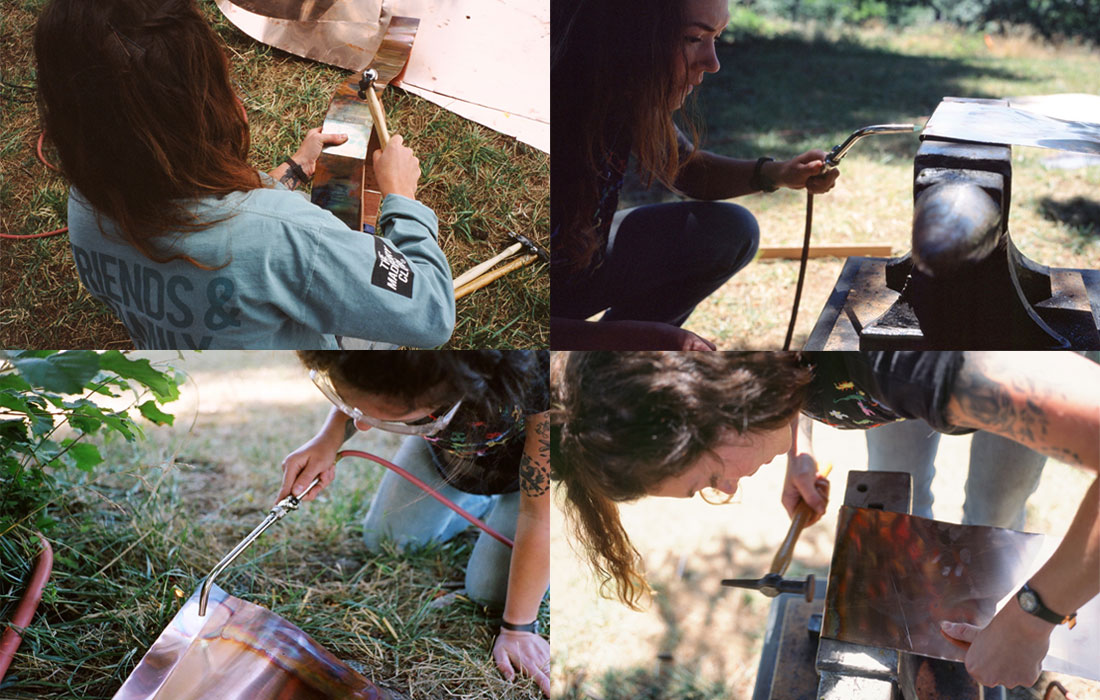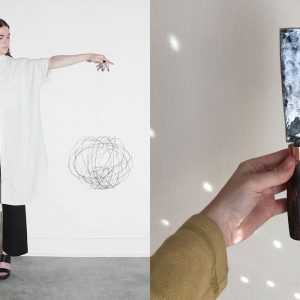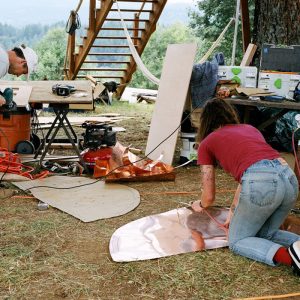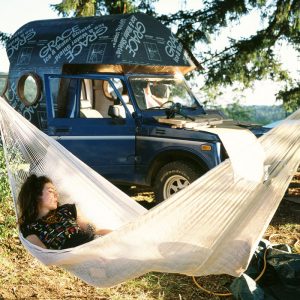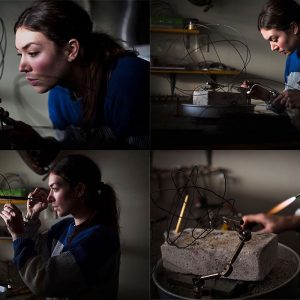In the digital-crazed age we live in today where a lot of humans are behind a computer screen over 40 hours a week, a genuine pair of working hands can be a sight for sore eyes. The dirt, burns and bandages that cover cuts and scrapes give way to stories that need to be told, and metal shaper Lane Walkup’s hands are definitely a conversation starter. To learn more about her work, RANGE met with Lane Walkup in Portland to discuss her trade.
Ranging from blacksmithing to casting and torch welding, Lane is a true multidisciplinary in the world of metal shaping. By combining traditional techniques with original designs, Lane’s ability to transform harsh elements into minimalist, creative and functional pieces of art is what draws us to her work. We caught up with Lane to discuss her background and creative processes as a 21st century metal mover and shaper.
Q. What is your first memory of shaping metal and what kind of metal work do you specialize in?
A. My first memory of working with metal was about seven years ago when I asked my dad to teach me how to weld. He was a welder in his early 20s while living in New York City, and has always been into making things like furniture and decorative pieces. He initially showed me how to weld nice “beads” by joining scrap metal together, and I started blacksmithing soon after that because I wanted to bend and shape objects and not just join them together. The first thing I made were wall hooks. They looked like shit, but it really felt good! I think I’ll forever be figuring out what I specialize in, but I love to torch weld steel shapes, cast wearable pieces, and forge functional things like knives.
Q. You currently reside in the PNW, but you’ve spent a lot of time in the Southeast, specifically North Carolina. How have your experiences and lifestyle in the Southeast inspired your artistic style?
A. Yeah, I was born in Texas and lived there for a while until we moved to North Carolina, where I’ve spent most of my life. Once I got older, I think I was sort of fighting the political atmosphere of the South, which probably led to the need to prove myself in some capacity. I believe that’s what made me want to try metalwork, to show I could do something that wasn’t necessarily the norm. I got a degree in nutrition, thinking I would want to work with those experiencing socioeconomic hardships and chronic health conditions. However, after working in the field and consistently feeling weighed down by the state of the public health system and healthcare in general, I chose a lighter path and started exploring metalwork.
Q. We’ve seen you work both in the studio and outdoors. In your experience, do you find creative value in metal shaping in natural surroundings?
A. Whenever I’m forging, I have to take it outside just so my studiomates don’t want to kill me from all the banging, but I’d definitely like to have a more permanent connection to natural surroundings while I’m working. I’d eventually love to have a studio with lots of windows, no neighbors in sight, a covered outdoor work area, and maybe even a nice view! My current studio is great and right by the river in Portland, but a girl can dream.
Q. Your ability to turn rigid materials into fluid and diverse pieces is something we really admire about your work. It’s impressive! You’ve shaped everything from functional knives to delicate wire sculptures and even creative wearables. What types of projects do you prefer to focus on?
A. Thanks! I don’t really prefer one over the other. I think it’s vital for me to feel like I can access that duality. It’s nice to actually be able to use some of the things I spend so much time on, but other days, it’s fun to make objects that don’t make sense for anything other than viewing pleasure. It’s therapeutic to think of something and then see it come to life.
Q. How would you describe your connection to the natural world, and how do you allow that connection to translate into your artwork?
A. I’m not sure if it directly translates through my work, but perhaps inspires it at times. I do love a good pastel sunset/textural landscape! Mainly I think just breaking up my routine by getting outside of the city helps me reset.
Q. You had a hand in building a copper camper with a team of friends. It’s SO RAD. Can you tell us a little more about your role in that project? What was it like to work on a more collaborative project?
A. Jay Nelson designed the whole thing and I helped with the metal aspects of it. I brought my torch and hammers, and worked on softening, cutting and bending the copper. It was super fun working on a larger scaled project with a bunch of guys. I’ve done quite a few collaborations with people working in different mediums from wood to ceramics to clothing. It was really rewarding to see how different people interpreted my stuff. That’s the best part for me.
Q. What’s next for you?
A. Honestly, I don’t really know where all of this will take me. I have secret hopes and dreams that I’m always playing out in my head, but for now, I’m just gonna keep on hustling and rolling with it!
Images by Java Fernández, Hilary Boles and Richard Darbonne.
xx Lisa
Lisa Dougherty is a NY native who now calls the PNW home. She enjoys crowd surfing, art, long drives, content creation and writing for RANGE.
